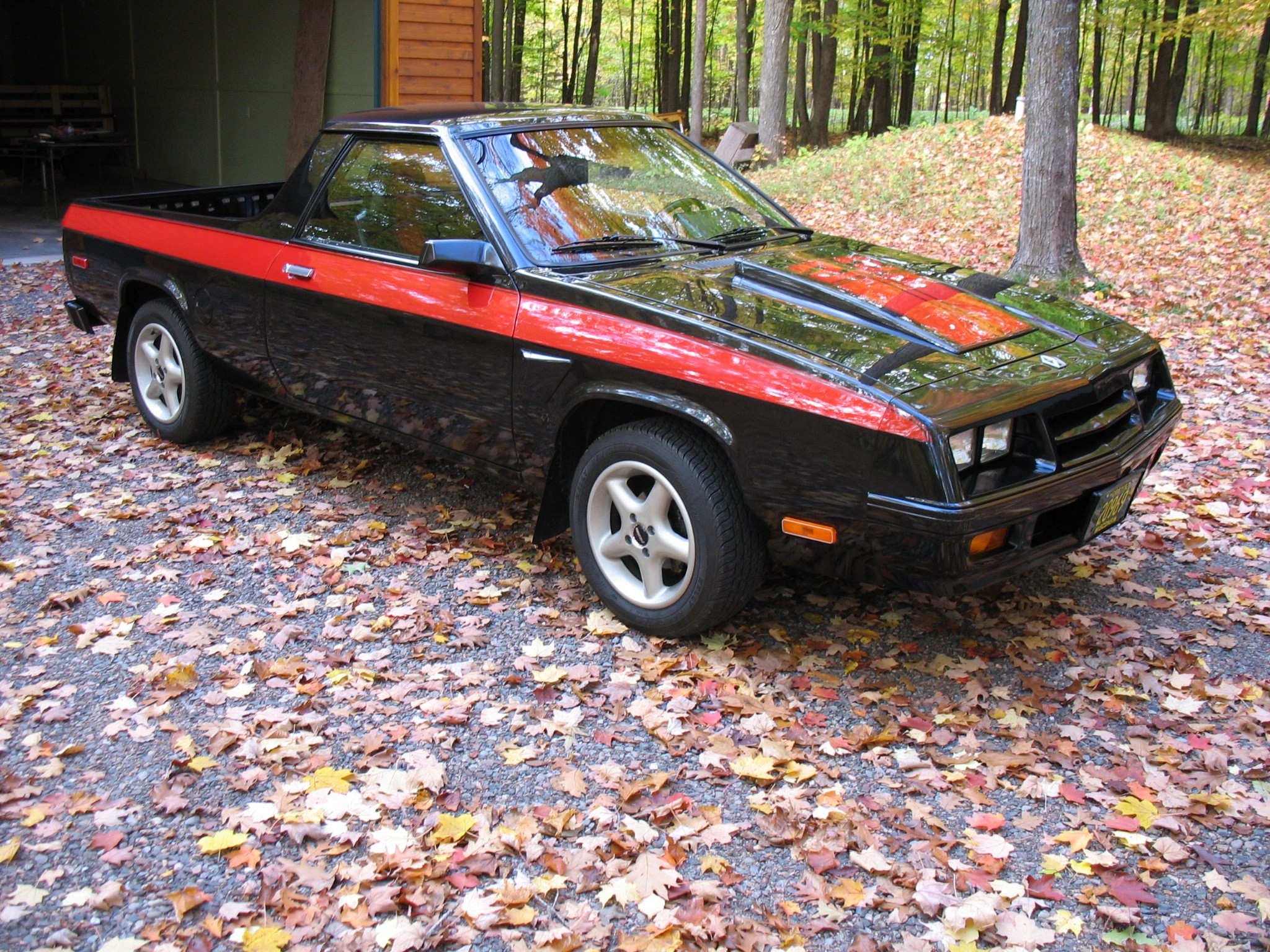In the automotive landscape of 1982, amidst a period of fluctuating fuel prices reminiscent of a “gas shortage,” many drivers were drawn to the fuel efficiency of diesel vehicles. During this era, I opted for a brand-new 1982 VW Rabbit diesel pickup, a vehicle I enjoyed for two decades thanks to its consistent 40 mpg fuel economy, regardless of driving style.
However, the automotive market also saw the introduction of another compelling option in 1982: the Dodge Rampage. Immediately, the Rampage caught my eye with its more appealing aesthetics compared to the VW. Beyond looks, the Dodge Rampage boasted superior power and a greater carrying capacity. Its extended chassis also translated to enhanced legroom and a slightly more spacious cargo bed, making the Dodge Rampage a truly versatile vehicle.
Produced in Belvidere, Illinois, this half-ton Dodge Rampage was manufactured for a brief three-year period, from 1982 to 1984, with a total production run of just 37,401 units. My own 1984 model rolled off the assembly line on September 22, 1984, a testament to the final year of this unique vehicle’s production.
The Dodge Rampage was ingeniously built upon the Dodge Charger chassis, sharing its DNA from the front seats forward. To accommodate the pickup bed, the wheelbase was extended from 99 to 104 inches, and heavy-duty rear springs were incorporated to handle cargo loads. In 1984, the base price was a modest $6800, with an upgrade to a 96-hp 2.2-liter 4-cylinder engine available for $7300. Equipped with front-wheel drive, standard disc brakes, and rack-and-pinion steering, the Dodge Rampage offered car-like handling and an impressive 30 mpg on the highway, blending practicality with driving enjoyment.
My Dodge Rampage is equipped with the 2.2-liter engine and a three-speed automatic transmission. It also features a custom paint scheme, a bespoke interior, and upsized 15-inch wheels. Originating as a rust-free southern vehicle, it was initially acquired by NASA and served as a security patrol vehicle at one of their facilities, evidenced by the still-present NASA government sticker on the driver’s side door frame.
NASA operated two Dodge Rampage vehicles at this location, both stripped-down white models with brown interiors and bench seats. Upon retirement from service, they were sold to auto auction companies and eventually found their way to a gentleman in Nashville. He undertook the restoration of one for his wife and began work on the second before an injury halted his progress. It was this second, unfinished Dodge Rampage that I acquired and have been gradually restoring as time permits.
Over several winters, I meticulously restored the mechanical components, replaced the windshield, and completely refurbished the interior of the Dodge Rampage. This involved rebuilding the headliner fiberboard with fiberglass and replacing numerous electrical components both behind the dashboard and in the engine compartment. The entire brake system was replaced, and the rack-and-pinion assembly was rebuilt. The ignition and fuel systems are entirely new, including the fuel tank. True to the reputation of small Chrysler products from this era, achieving a proper engine idle presented a significant challenge. I rebuilt the Holley carburetor, which proved ineffective, and subsequently sent it to a Holley specialist for professional attention. Even after their expert work, the idle issue persisted.
Following the discovery of metal shavings in the oil pan, I undertook a complete engine overhaul. While disassembled, the engine was balanced and bored .030 over. Despite these measures, the engine still did not run correctly.
The breakthrough came when I realized a previous owner had replaced the original carburetor with a unit that incorrectly featured an extra vacuum line, according to the emissions system diagrams. By eliminating this superfluous vacuum line and plugging the extra port, the engine finally ran flawlessly. This year-long, costly troubleshooting process culminated in immense relief and satisfaction upon resolving the issue with my Dodge Rampage.
Today, the Dodge Rampage delivers an exceptional driving experience and attracts attention wherever it goes. In its prime, the 2.2-liter engine was marketed as a “mini torque monster.” While it may not be a drag racer (unless pitted against a diesel Rabbit), it confidently tackles inclines without significant speed loss. In my view, the Dodge Rampage possesses ample power to ensure enjoyable driving.
“I was unaware Chrysler ever produced such a truck” is a frequent remark I encounter at car shows. Another common question is, “Why did you restore this thing?” The answer is simple: I desired something unique, a vehicle rarely seen today. I am also frequently asked if it is for sale, but truthfully, I cannot envision replacing my Dodge Rampage with anything else.
Explore more automotive stories on the Hagerty Media homepage and consider subscribing to our newsletters for curated content delivered directly to your inbox.
Discover further insights below.
